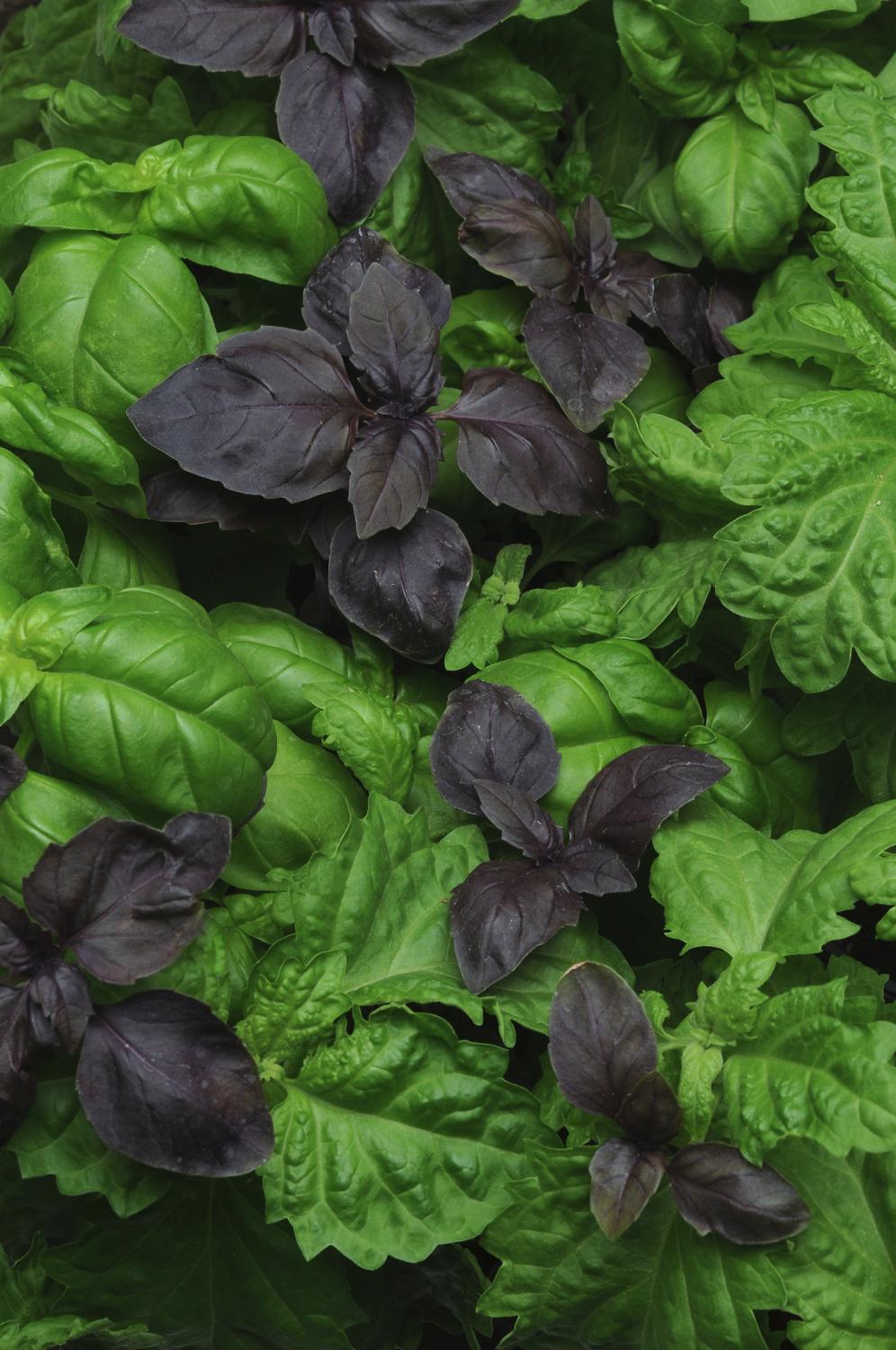
Crop Culture Report: ‘Try Basil’ — Three Basils in One Pot
For herb enthusiasts and food aficionados, Ocimum basilicum (sweet basil) is a must-have variety in the garden. Originating in Southeast Asia and native to India, herb basil has been used for regional cuisines and medicinally for more than 5,000 years. The expanded palette of today’s consumer has broadened the search for basil flavors and textures, offering growers an opportunity to market more basil varieties to their customers (there are currently over 160 named cultivars).
New for 2014, and available exclusively through the Burpee Home Gardens program, is ‘Try Basil’, a multi-seed herb pellet that produces three varieties of basil for one pot Genovese, serrated and dark red. ‘Try Basil’ pellets provide just the right amount of seed for plugs or pots. It’s an easy and economical way to grow this popular herb: Just one pellet fills a 4-inch pot fast, with no seed broadcasting or scoops across the soil.
Healthy, uniform ‘Try Basil’ plants ship well and look great at retail. Having three basil varieties in one container provides consumers a colorful and useful culinary or ornamental treat. Here are some growing tips for ‘Try Basil’ from the experts.
Germination
Sow in a 288 or larger tray. Time of radicle emergence is two to four days at soil temperature 68 to 74° F. Keep media very moist, near saturation. The seed may be left covered or uncovered. Keep soil pH at 5.5 to 5.8 and soluble salts (EC) less than 0.75 (2:1 extraction). Basil is very sensitive to high salts, particularly high ammonium, during germination. Keep ammonium levels less than 10 ppm.
Plug Production
In Stage 1, time of radicle emergence is two to four days with soil temperature at 65 to 70° F. Keep media very moist, near saturation.
In Stage 2, stem and cotyledon emergence (seven days) keep soil temperature at 65 to 70° F. Reduce moisture levels once radicle emergence occurs. Allow the soil to dry out slightly before watering for best germination and rooting. Keep soil pH at 5.5 to 5.8 and EC less than 0.75. Maintain ammonium levels less than 10 ppm. At this stage you can begin fertilizing with 50- to 75-ppm nitrogen from 14-0-14 or a calcium/potassium nitrate feed once cotyledons are fully expanded. Alternate feed with clear water irrigating early in the day so foliage is dry by nightfall to prevent diseases.
During Stage 3 growth and development of true leaves (seven to 10 days), lower soil temperature slightly to 62 to 65° F. Allow the soil to dry thoroughly between irrigations but avoid permanent wilting to promote root growth and control shoot growth. Maintain soil pH 5.5 to 5.8 and EC less than 1.0. Increase feed to 100- to 150-ppm nitrogen from 20-10-20 alternating with 14-0-14 or other calcium/potassium nitrate fertilizer.
Fertilize every two to three irrigations. If using 15-0-15, supplement with magnesium one to two times during this stage, using magnesium sulfate (16 ounces/100 gallons) or magnesium nitrate. Do not mix magnesium sulfate with calcium nitrate as precipitate will form. Use day/night temperature differential (DIF) whenever possible, especially the first 2 hours after sunrise, to control plant height.
In Stage 4, plugs can be ready for transplanting or shipping (seven days). Keep soil temperature at 62 to 65° F and continue to allow soil to dry thoroughly between irrigations. Maintain soil pH 5.5 to 5.8 and EC less than 0.75. Fertilize with 14-0-14 or calcium/potassium nitrate feed at 100- to 150-ppm nitrogen as needed.
Growing On to Finish
Night temperatures for finishing should be 50 to 60° F. Keep day temperatures at 62 to 75° F. Maintain light levels as high as possible while maintaining moderate temperatures. Use a well-drained, disease-free soil-less medium with a medium initial nutrient charge and a pH 5.5 to 6.2.
Fertilize every other irrigation with 15-0-15 alternating with 20-10-20-at-150-ppm nitrogen. Maintain medium EC around 1.0 (using 1:2 extraction). Once plants are rooted to the sides of the containers, they can be allowed to wilt prior to irrigation to provide some height control. Height can also be controlled by withholding fertilizer, especially phosphorous and ammonium-form nitrogen. Basil is responsive to DIF, and are shorter with a negative DIF.
Post-Production Care
Optimum temperatures for basil:
Night: 62 to 65° F
Day: 65 to 70° F
Optimum conditions may be difficult to maintain, especially if plants are displayed outside. Using a negative DIF will help keep the plants short and of high quality.
Common Problems
Insects: White fly, spider mites
Diseases: Fungal diseases


 Video Library
Video Library 




















